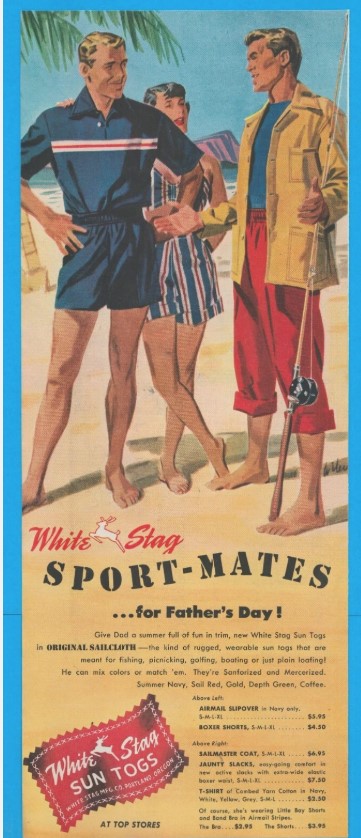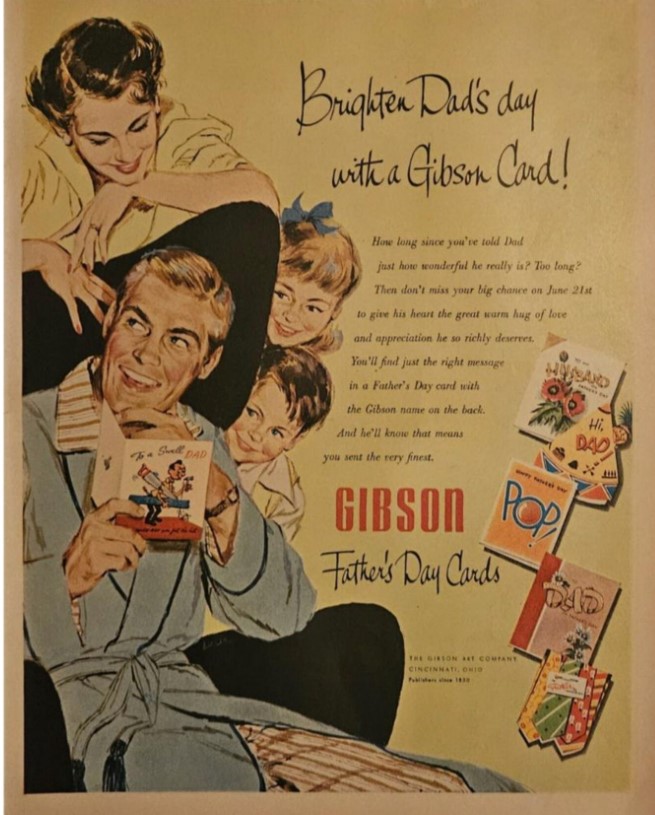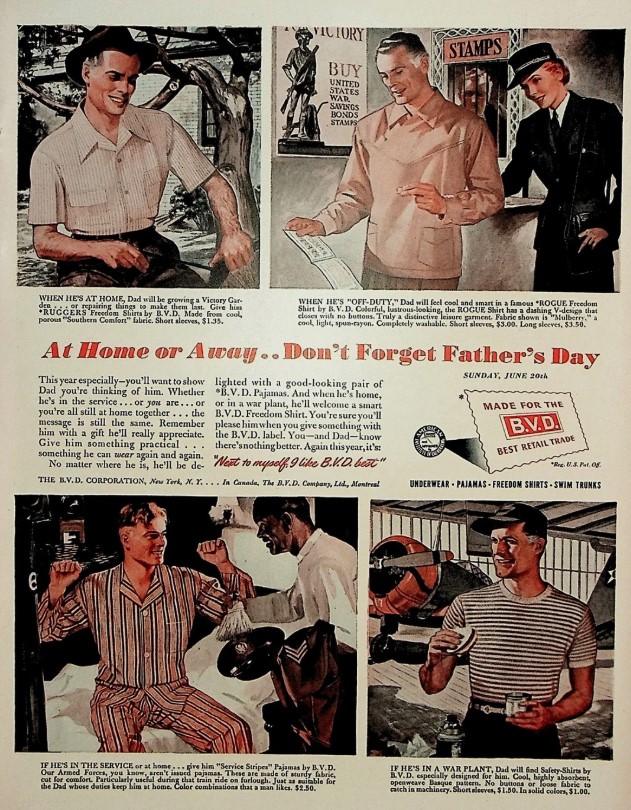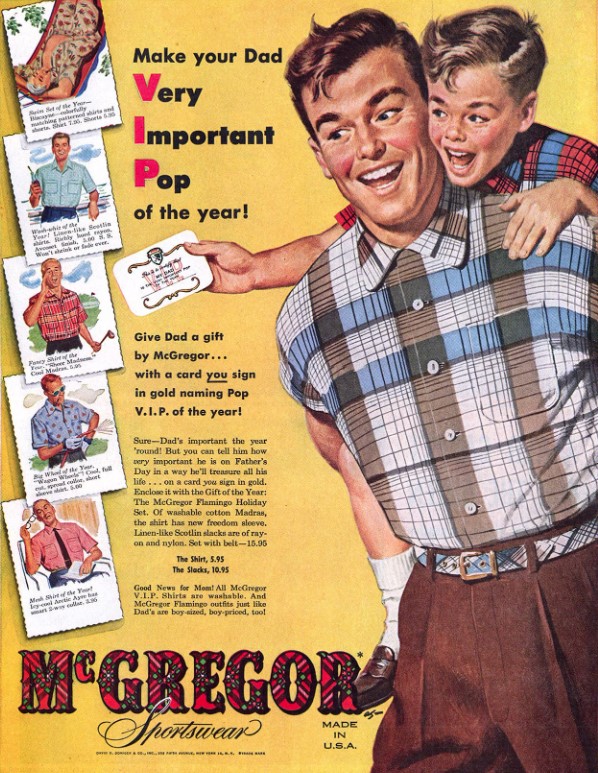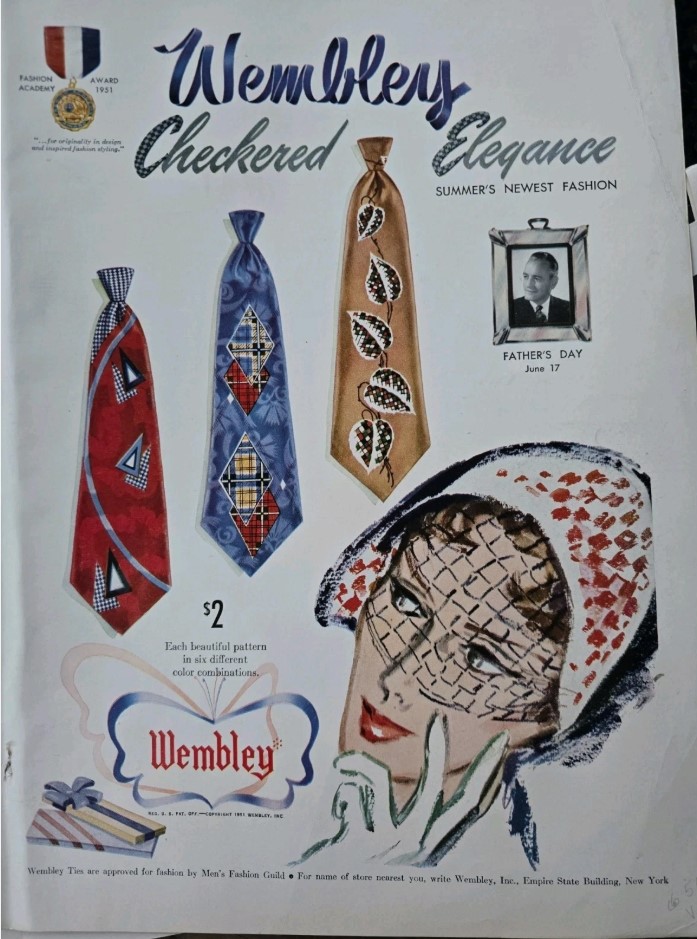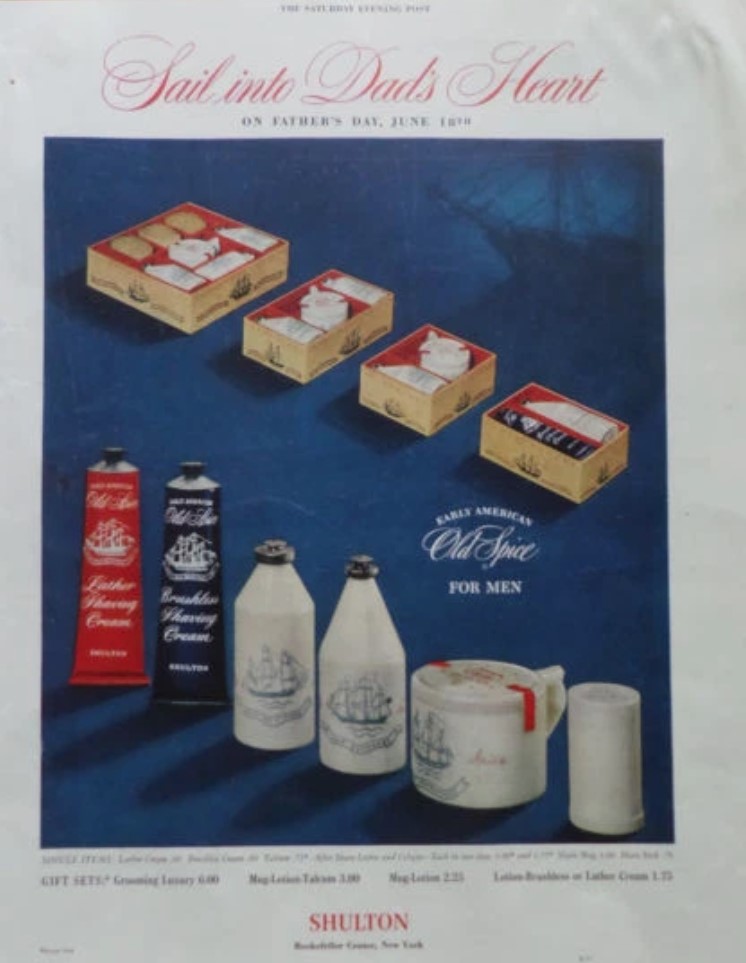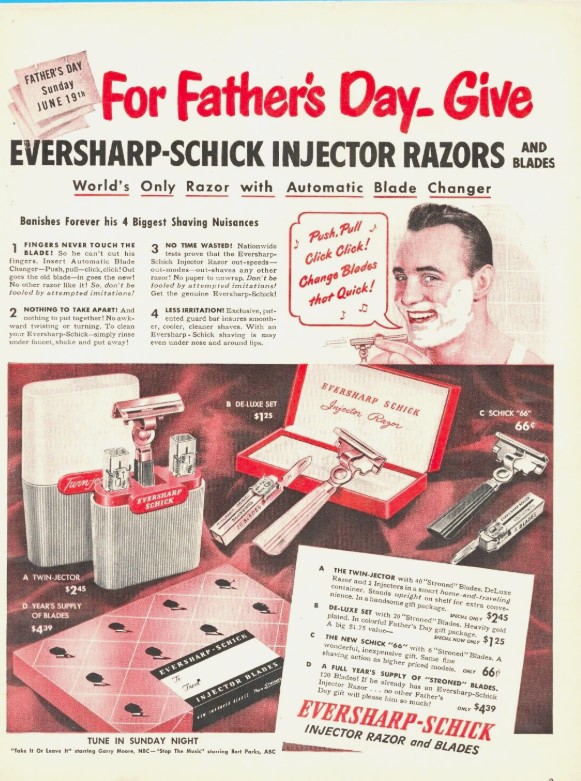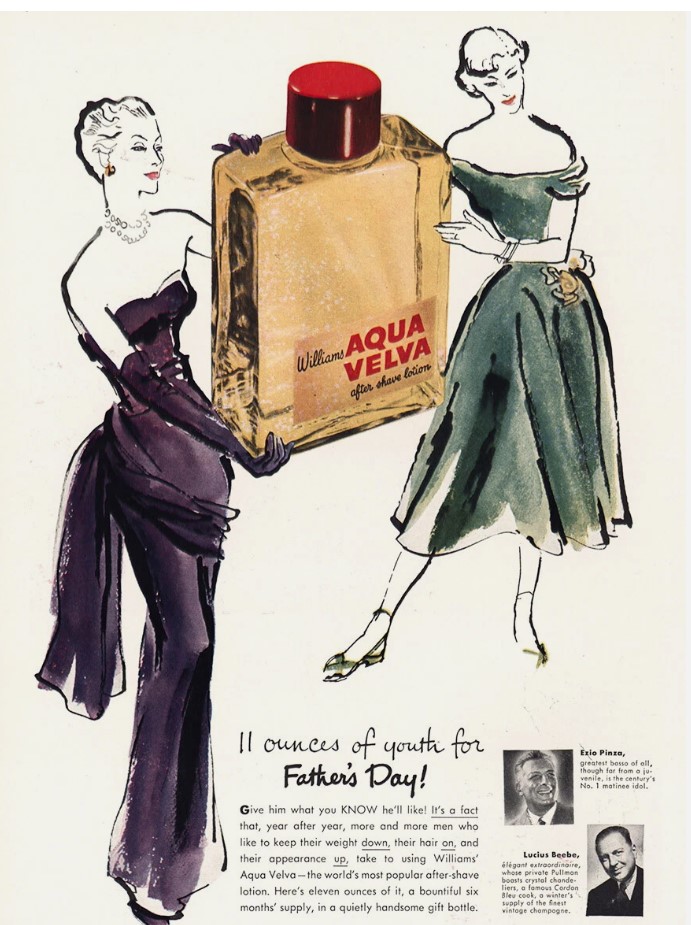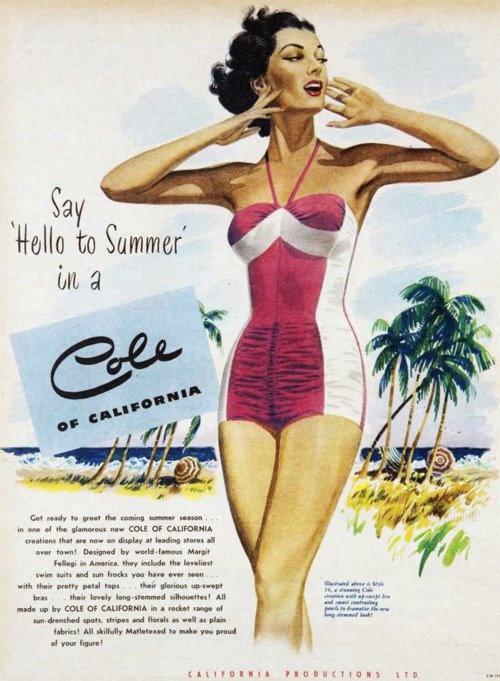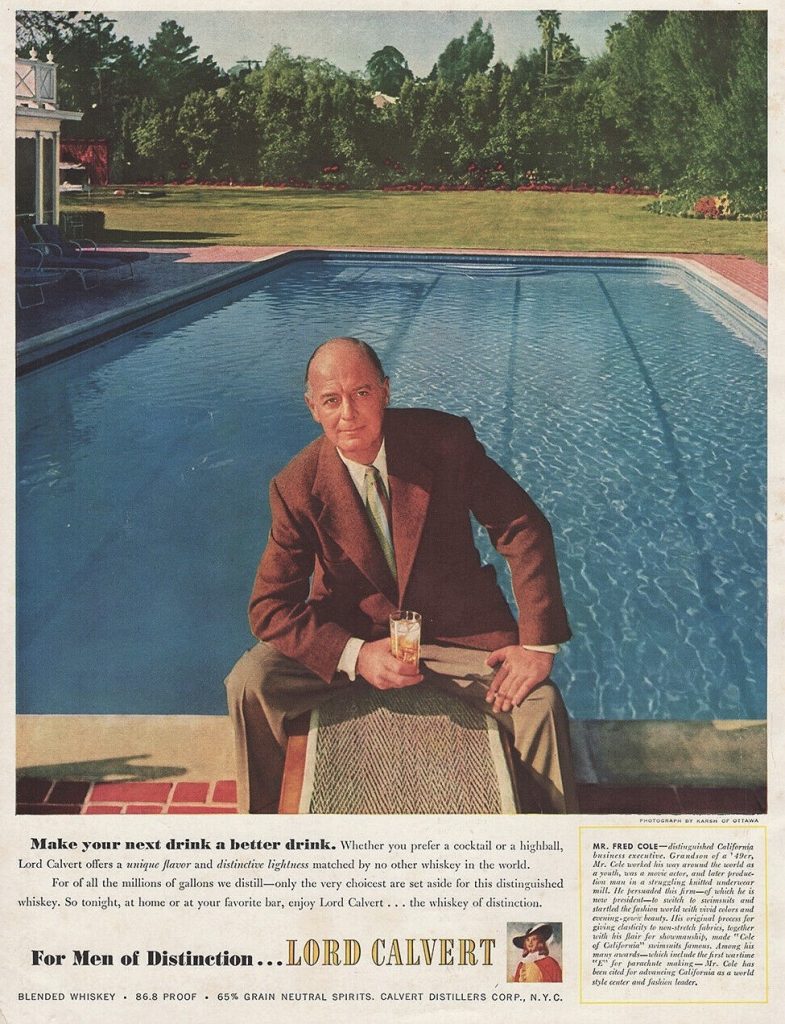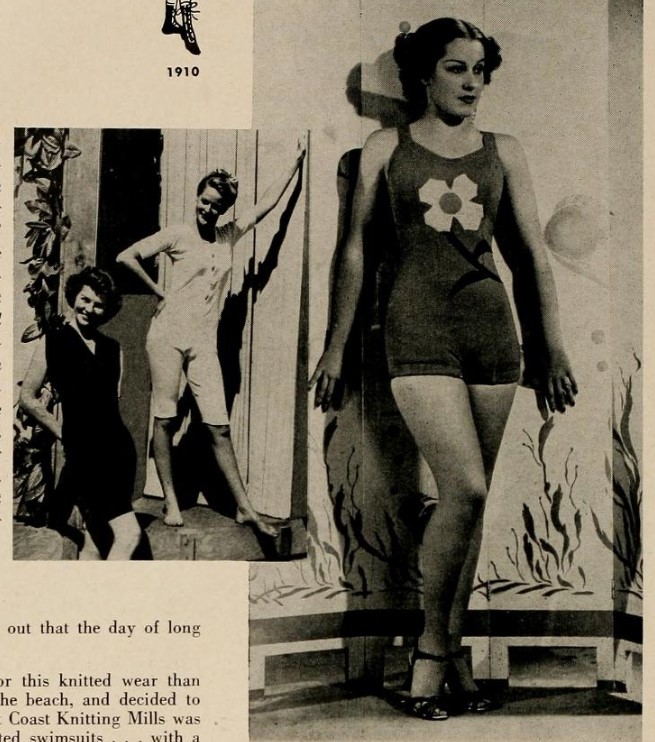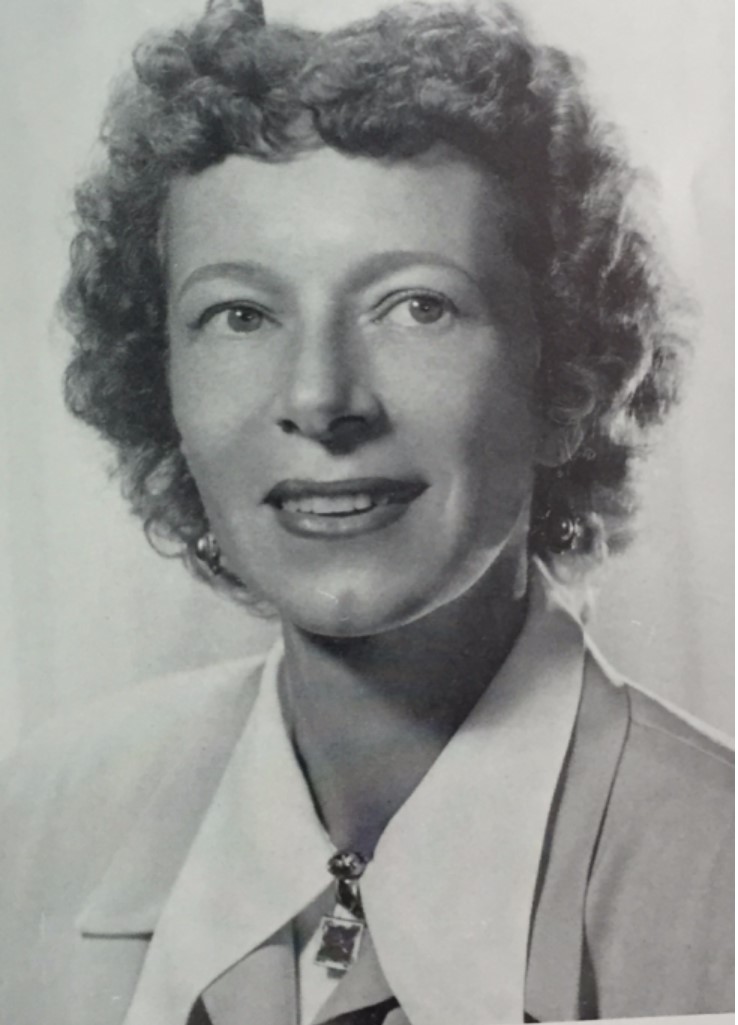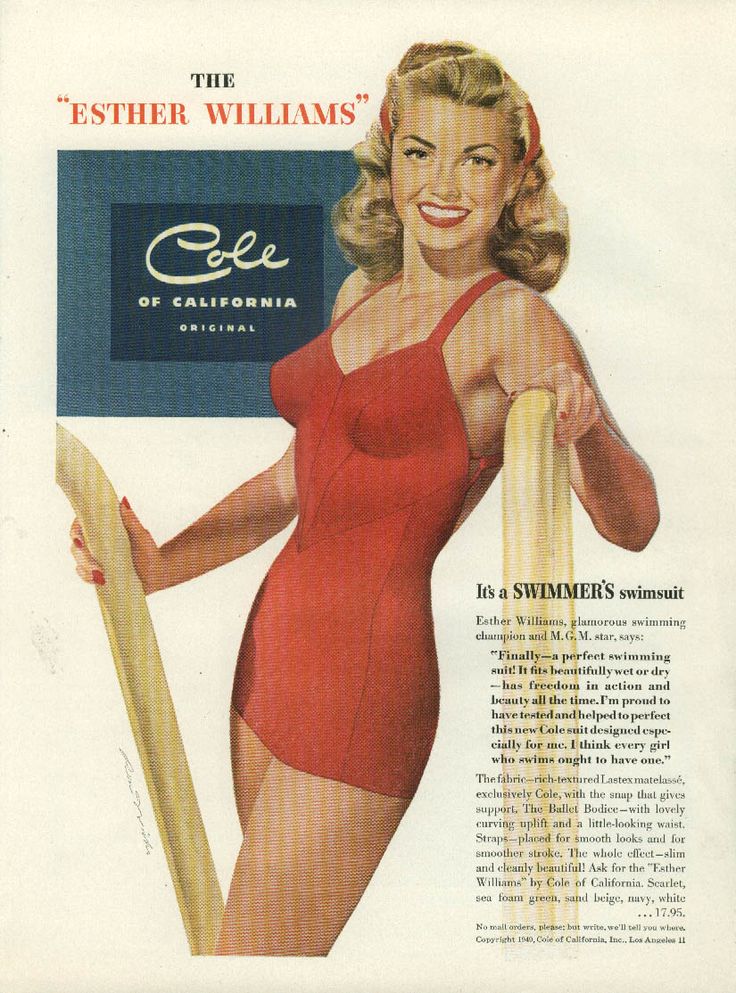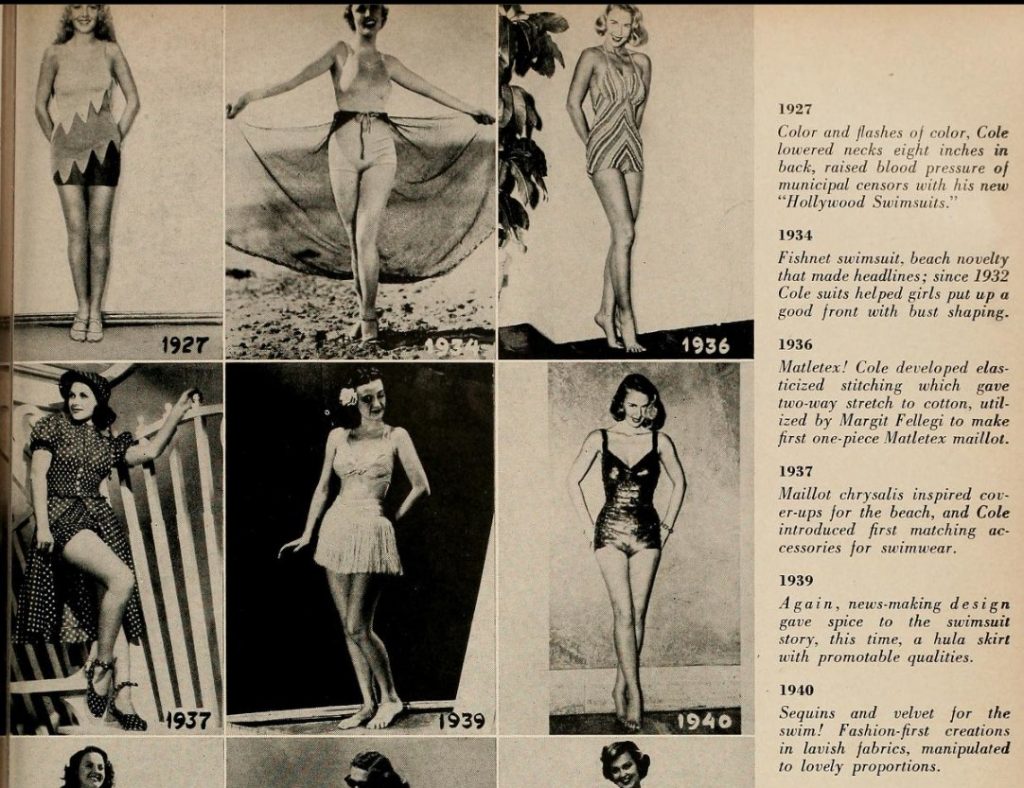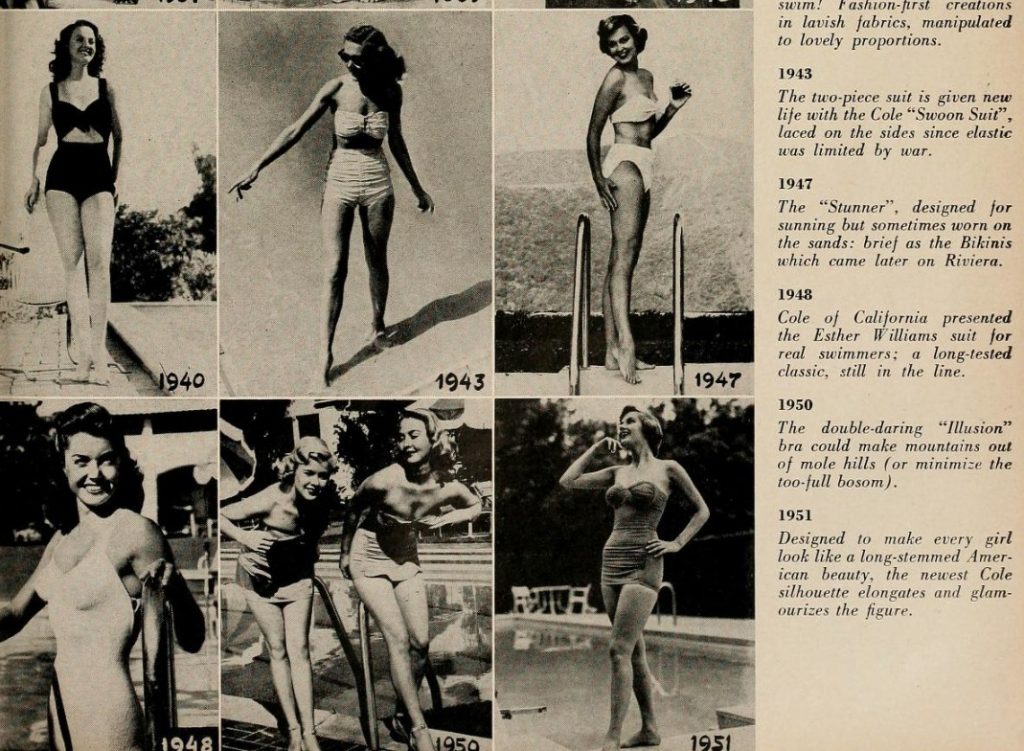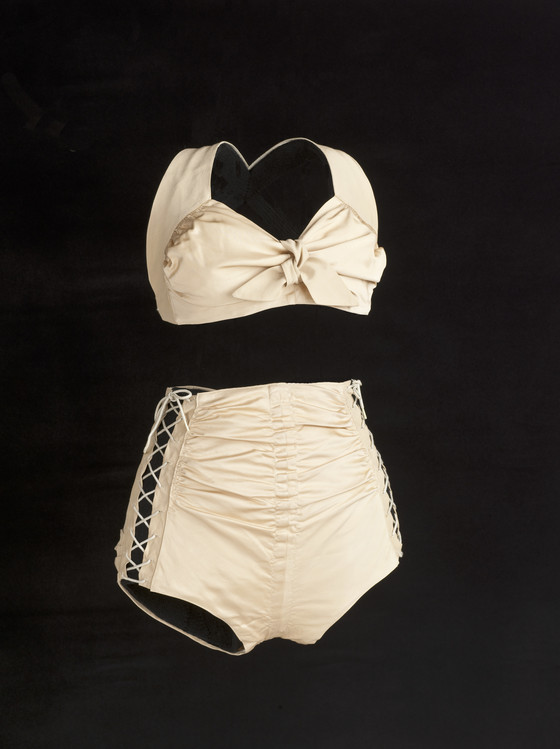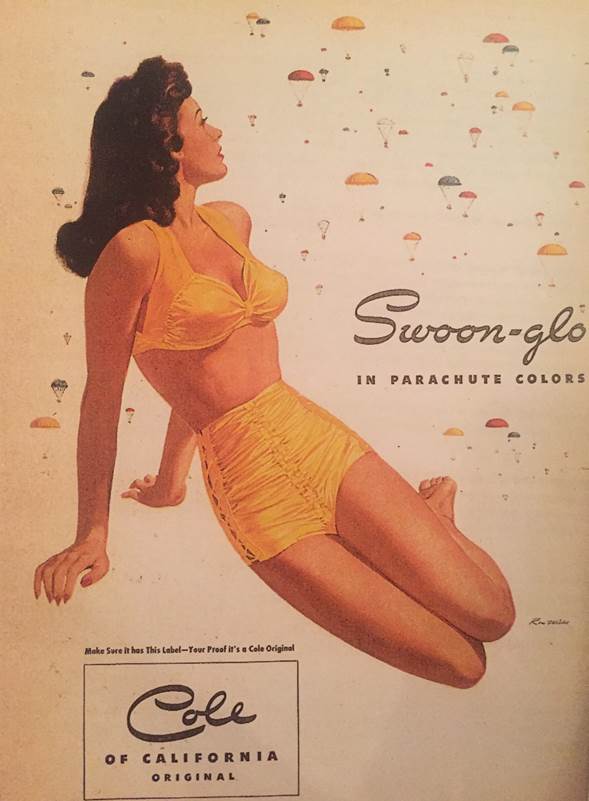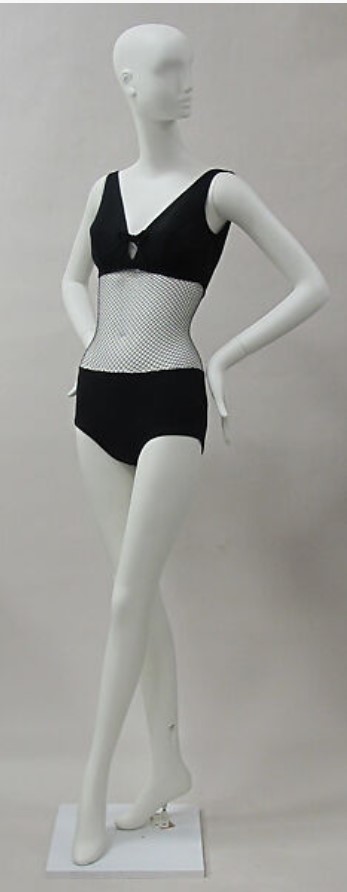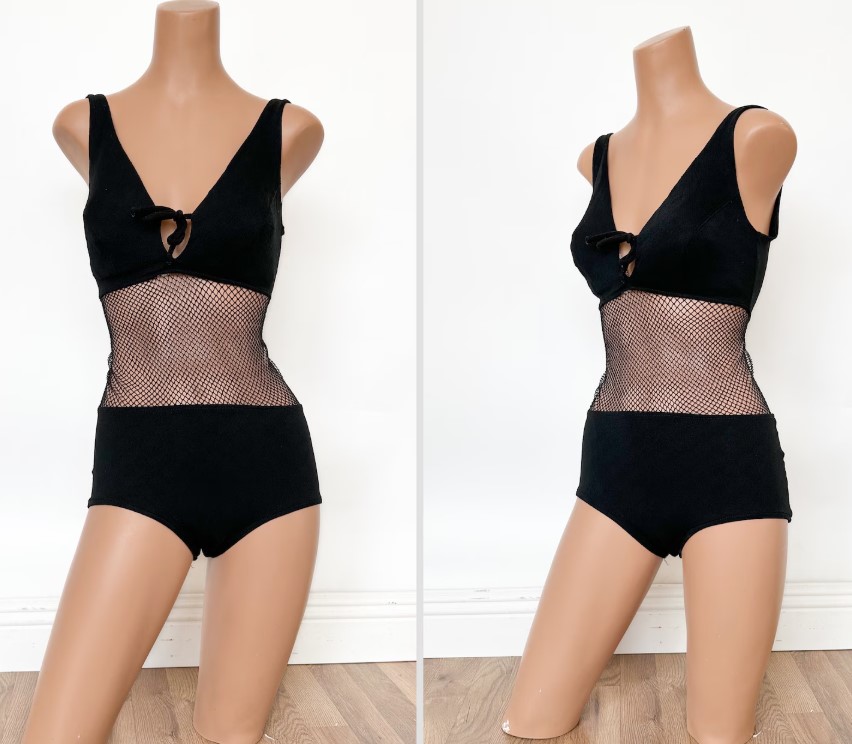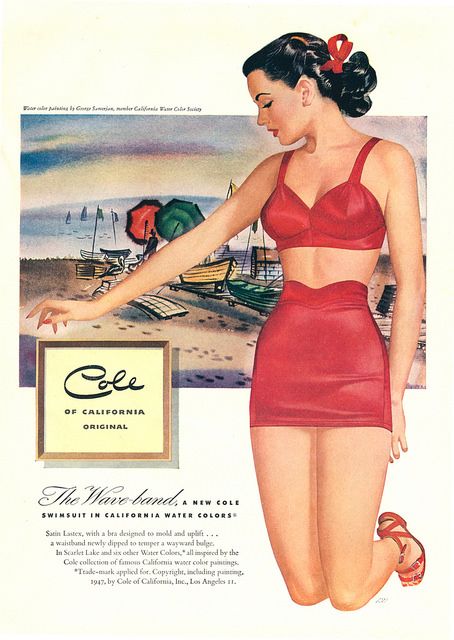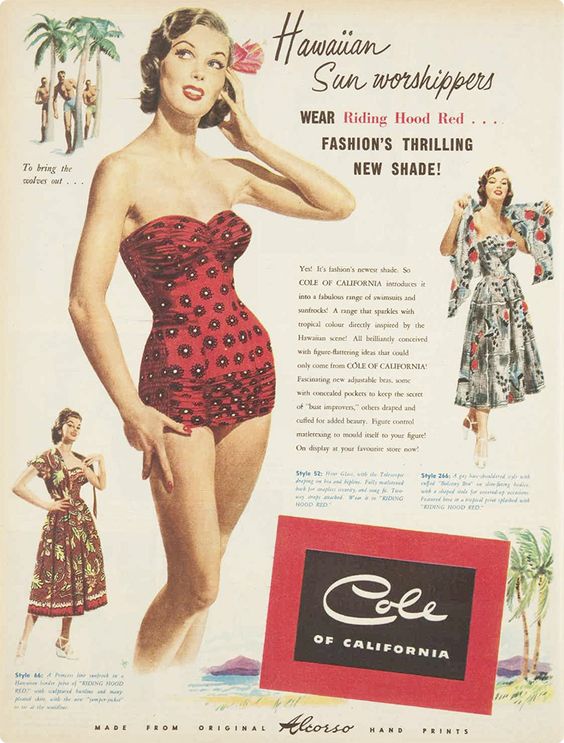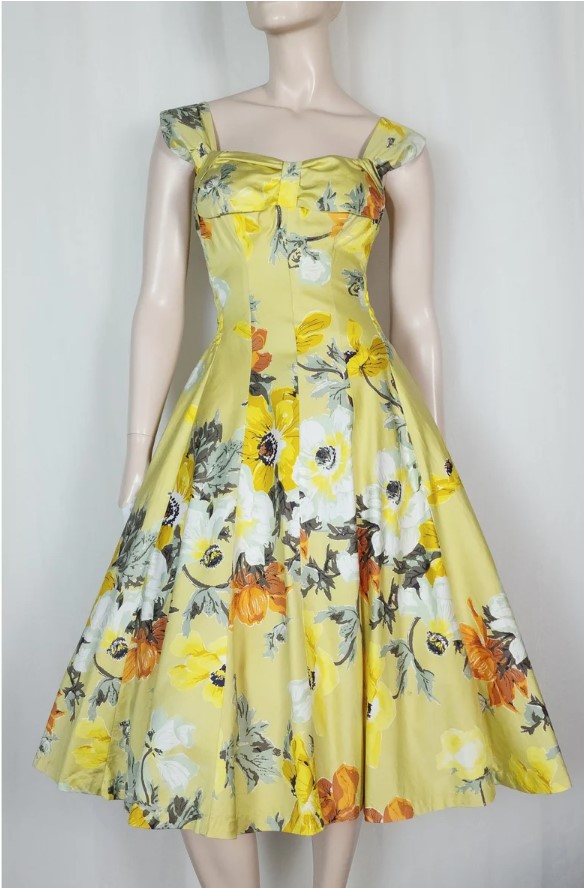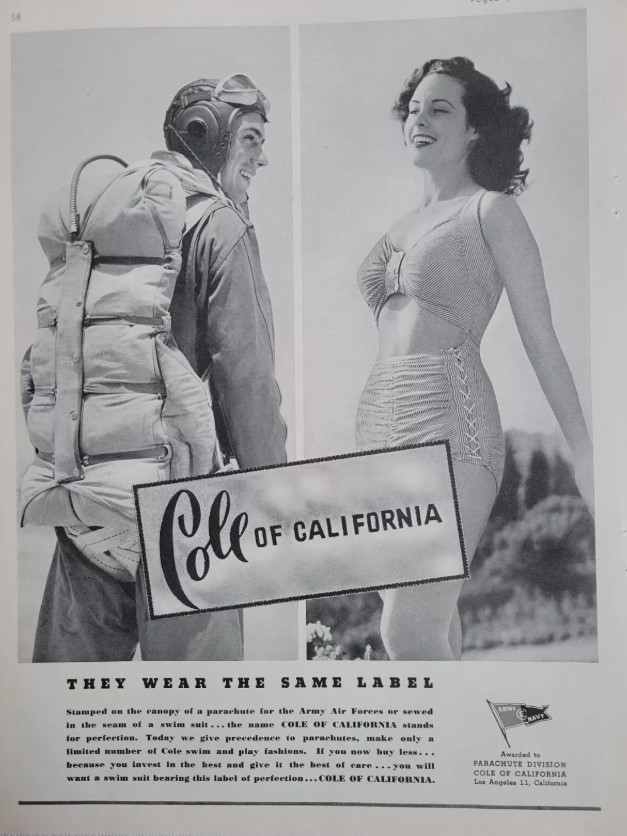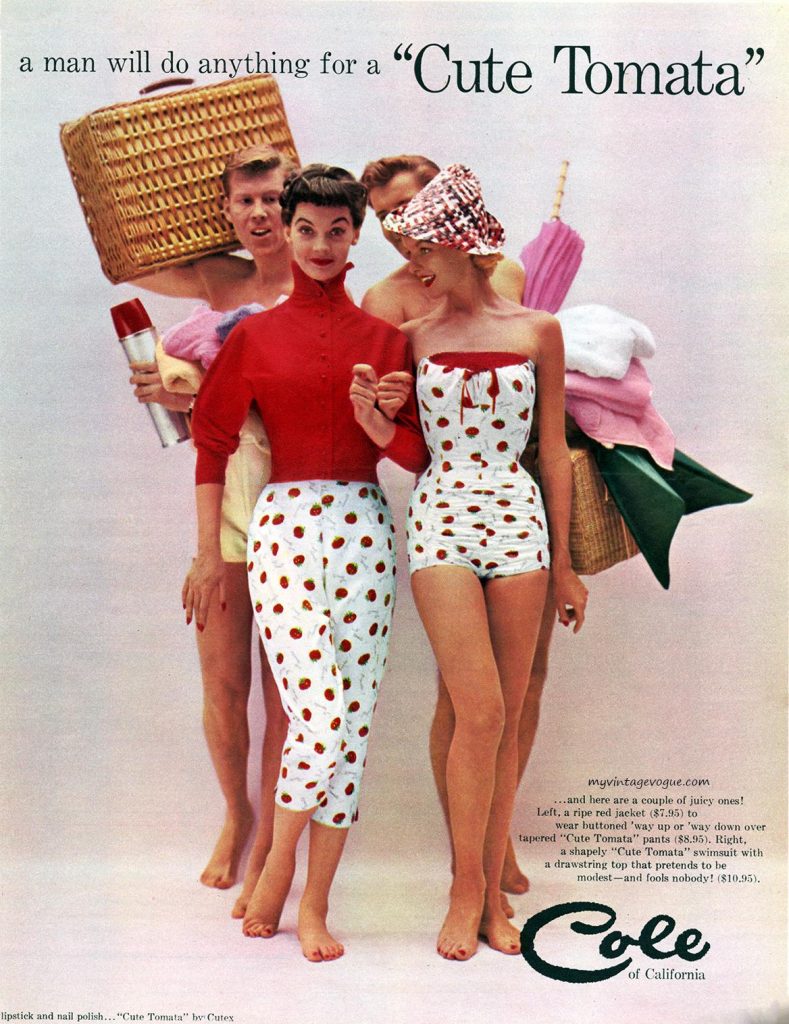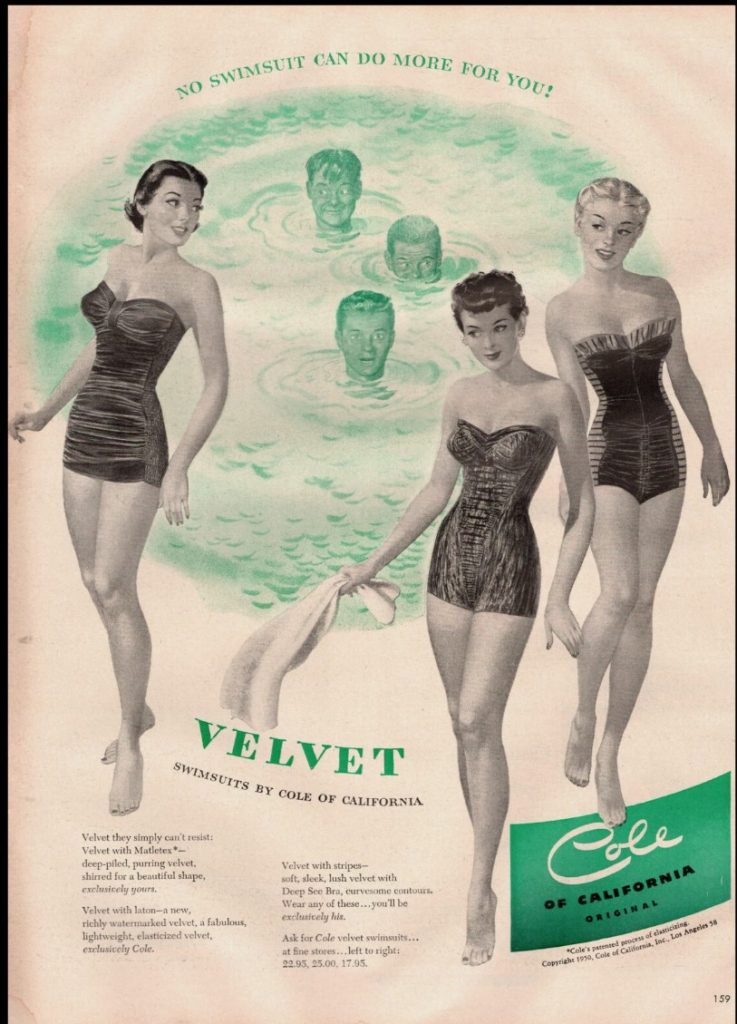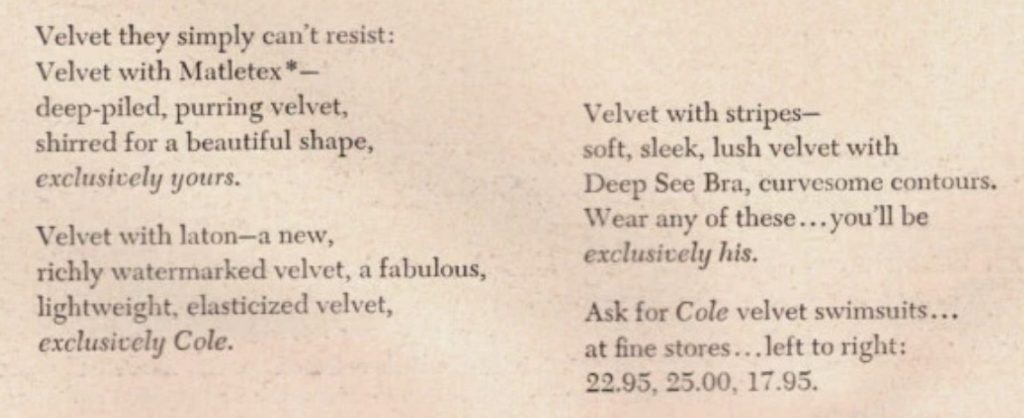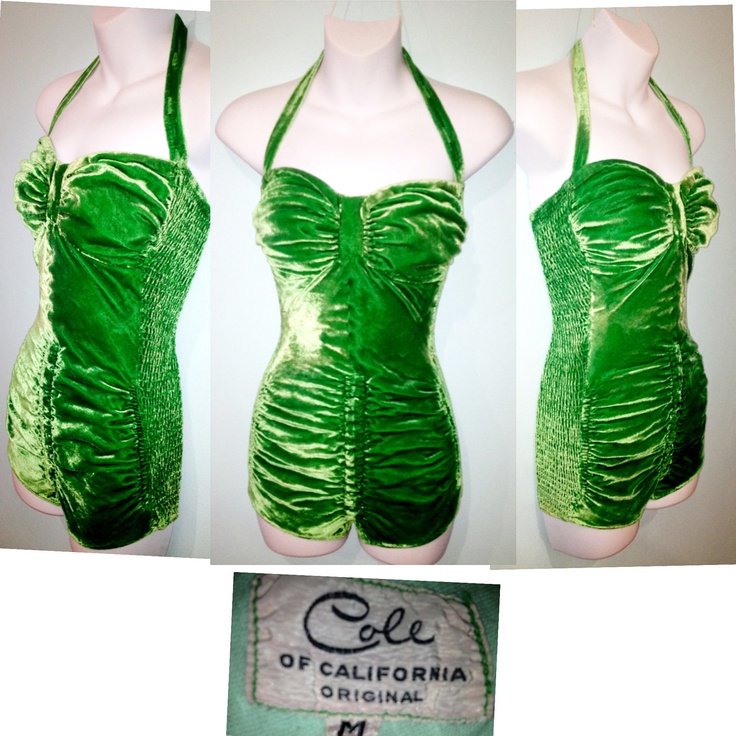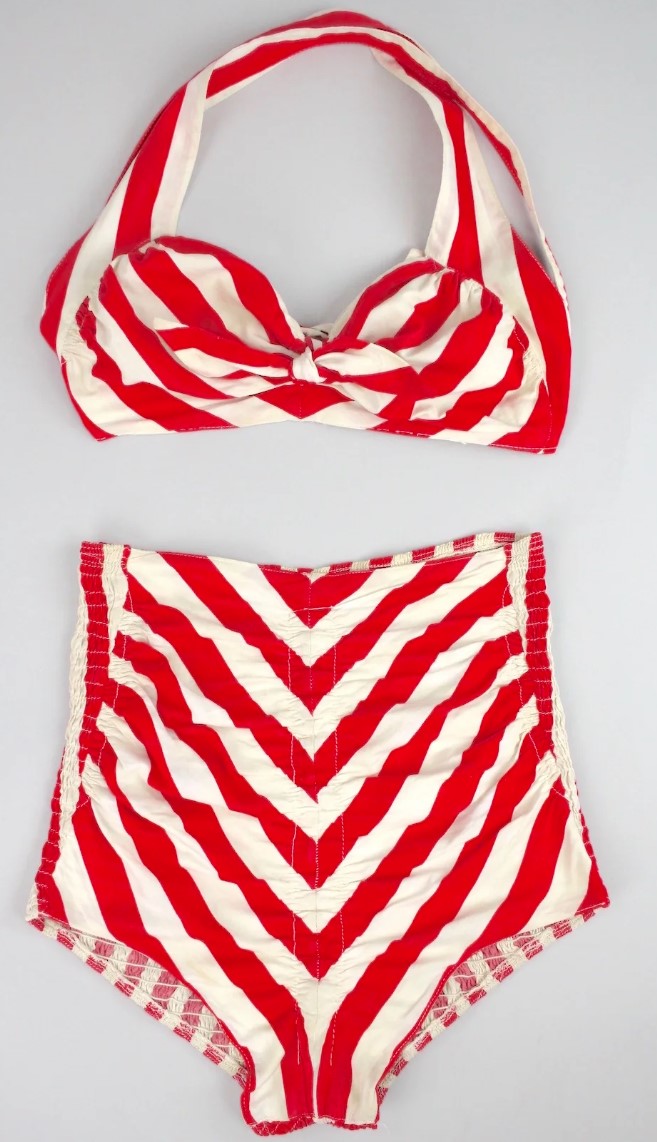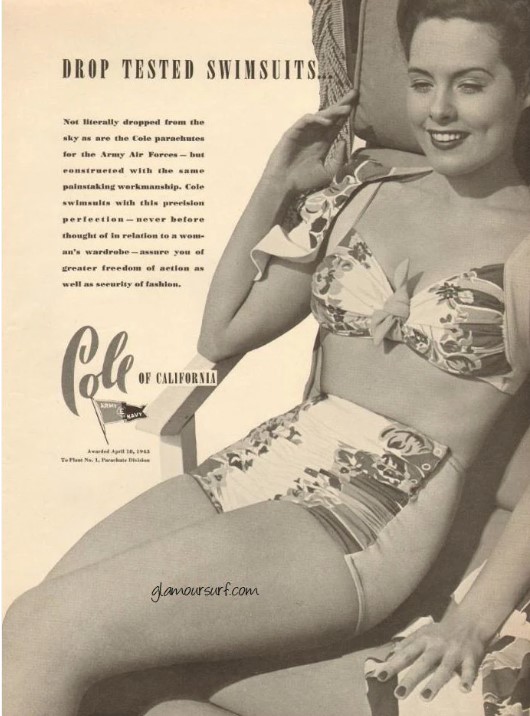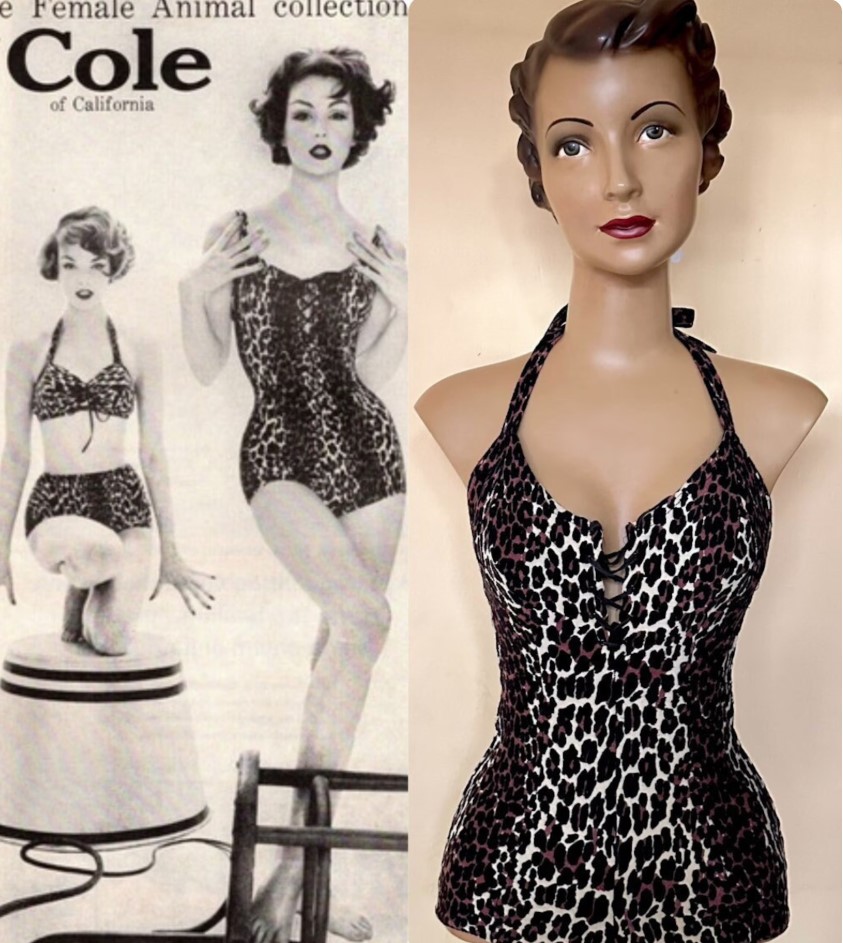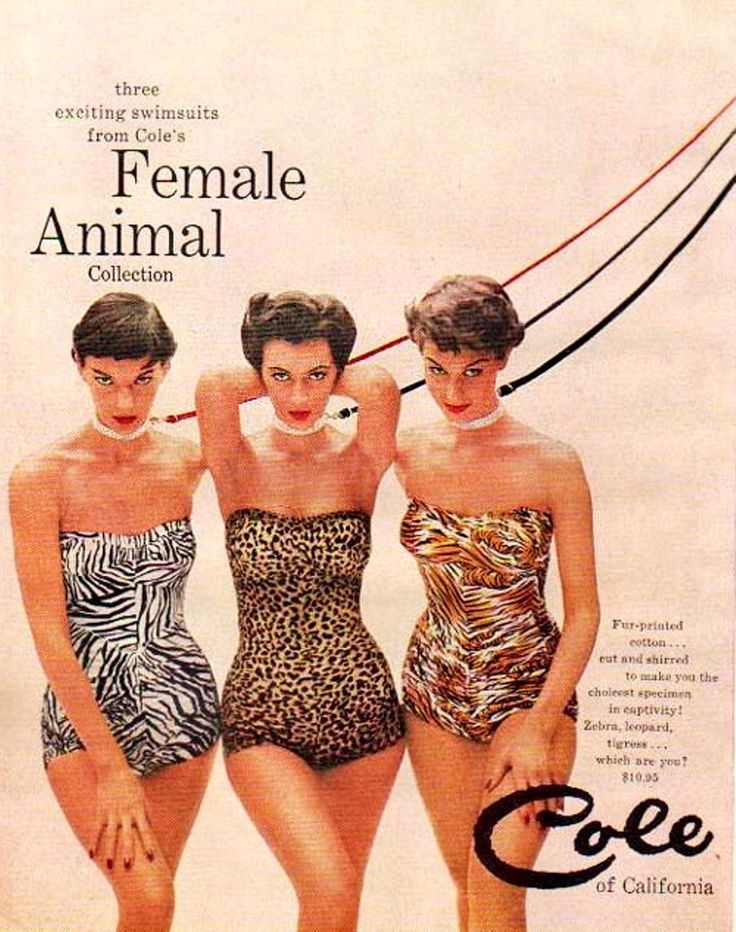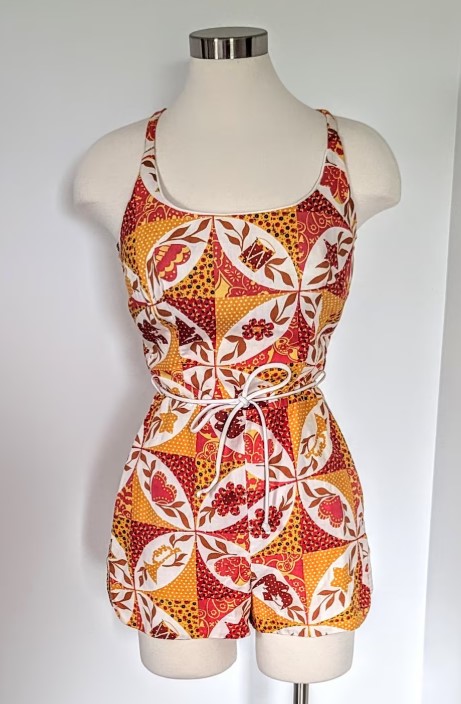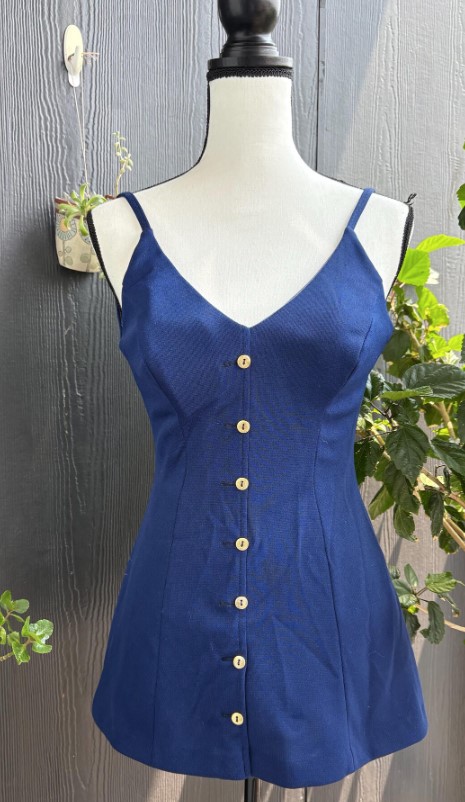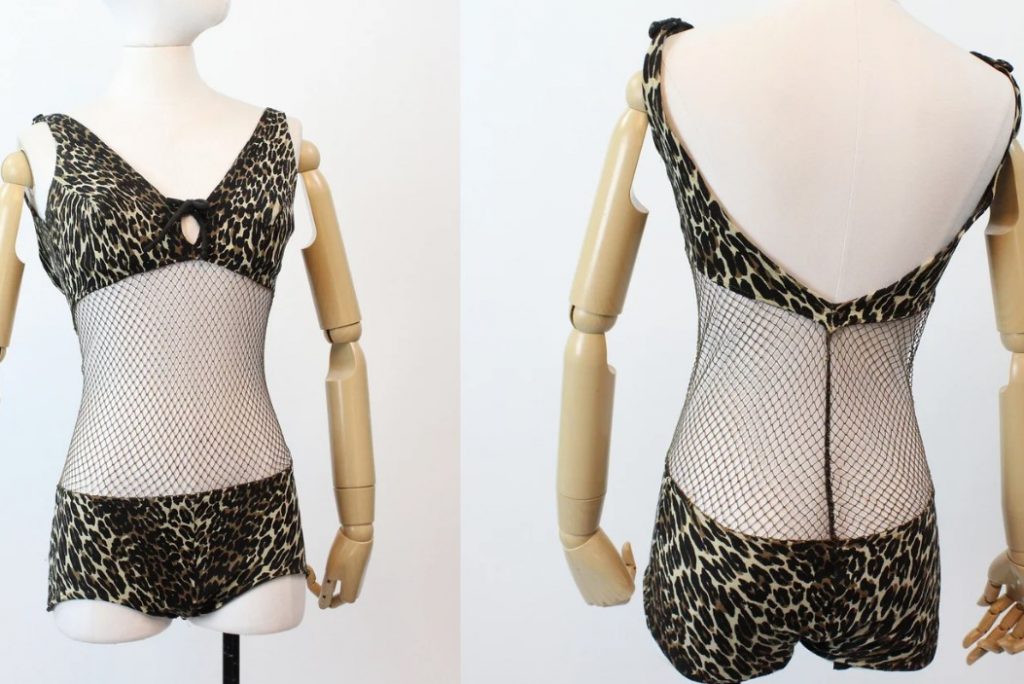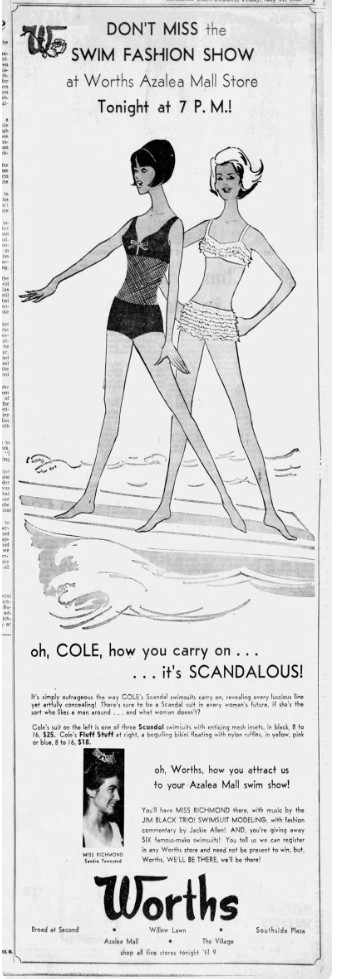When it comes to vintage swimwear, few names evoke the glamour and innovation of mid-century fashion quite like Cole of California. This iconic American brand helped redefine beach style, thanks in large part to the creative genius of Margit Felligi, their head designer from 1936 to 1972.
In this post, we’ll take a brief dive into the history of Cole of California, celebrate Felligi’s groundbreaking contributions, and showcase a collection of stunning vintage advertisements and swimsuit examples that capture the brand’s timeless appeal.
Let’s begin!
Disclosure: Some of the links on my blog from Etsy , eBay are Affiliate Links, meaning, at no additional cost to you, I will earn a commission if you click through and make a purchase.
Brief History of Cole of California
Cole of California started as a swimwear division of the West Coast Manchester Knitting Mills. West Coast was a maker of men’s long knit underwear, owned by the Cole family. In 1925 son Fred Cole, who had been working as an actor, was convinced to join the family business. He did not find making underwear very interesting, so he decided to make bathing suits that had a glamourous, Hollywood edge (Source).
1952 Lord Calvert Whiskey ad, featuring Fred Cole. Source: Wikipedia
Cole in 1925 introduced the sleeveless “Hollywood Swimsuit” with a low back and neckline and a short skirt. Also called a “Prohibition suit”, the new, colorful suit incorporated elastic to hug the body. By the standards of the time, in which swimsuits had sleeves and knee-length legs, the Hollywood Suit was risqué, and immediately popular. It was also set the pace for the line which later was named, ‘Cole of California’ (in 1941).
Example of the “Hollywood Swimsuit” (on the right) as seen in the 1946 magazine, The Californian (Source).
Source: Archives.org
Margit Felligi-Head Designer & A True Innovator In The World Of Swimwear
Source: ASU FIDM Museum
From 1936 to 1972, the company’s head designer was Margit Felligi, a former theatrical costume designer. Felligi was a trailblazer in the swimwear industry, credited with several innovations and holding multiple government patents throughout her career. In 1938, she developed Matletex, a cotton fabric warp-woven with Lastex to add subtle stretch—an early step toward the modern stretch fabrics we know today (Source).
Another bold move by the company (and Margit) was shifting to cotton as the primary material for swimwear at a time when wool was still the standard. Cole also helped popularize white swimsuits, which were considered quite daring due to concerns about their potential transparency (Source).
During World War II the company made parachutes, resuming full swimwear production after the end of the war. However, Fellegi continued to work on a limited number of designs, including the 1943 Swoon Suit, a two-piece suit that used side-laces to compensate for the lack of rubber (see further down for an example).
In 1951 (before she had her own line) Esther Williams was the spokeswoman for Cole swimsuits (1948-1952). One ad read:
“Here’s the perfect suit for real swimmers… the best I’ve ever worn. It will really do something for your form – in or out of the water.”
1949 vintage ad. Source: Pinterest
In 1964 Margit rocked the swimsuit world with her “Scandal Suit,” a daring one-piece suit with a plunging net front (seen further down for an example).
The company is still producing swimwear, and there is a sister company, Anne Cole, which is designed by Anne, Fred Cole’s daughter (Source-Vintage Fashion Guild).
Further Reading: Vintage magazine called “The Californian” published in 1946 did a whole article on Fred Cole and his company. It’s a really great read, with some fantastic photos and lots of incredible information about Margit’s innovations.
1927-1951 Evolution of the Cole of California Swimsuit and Margit’s Innovations
(as seen in the 1946 Californian)
- 1927: The Hollywood Swimsuit (originally introduced in 1925)
- 1934: Fishnet swimsuit, beach novelty that made headlines
- 1936: Matletex was developed by Cole which gave stretch to cotton and utilized by Margit Fellegi to make first one-piece Matletex maillot (tank suit or one-piece).
- 1937: Matching beach accessories for swimwear like the skirt and jacket designed by Margit
- 1939: Hula skirt added to swimsuit
- 1940: Sequins and velvet for the swim
- 1943: The Swoon Suit
- 1947: The “Stunner”, designed for sunning
- 1948: The Esther Williams suit for real swimmers; a long-tested classic
- 1950: The double-daring “Illusion” bra could make mountains out of mole hills (or minimize the too-full bosom)
- 1951: Designed to make every girl look like a long-stemmed American beauty, the newest Cole silhouette elongates and glamourizes the figure.
Source: Archives.org
The Swimsuits Mentioned Above…
1943 Swoon Suit
Source: LACMA Collections
1944 vintage advertisement for the Swoon Suit, “Swoon-glo in parachute colors”. Love the connection between Cole making parachutes and Margit still designing for the brand but on a smaller scale.
This swimsuit’s most popular color was “Parachute White.” (Source)
1964 Scandal Suit
In 1964, Cole of California introduced the “Scandal” bathing suit line, named for its provocative exposure of the body through panels of nylon mesh. Margit Fellegi designed the suits using a process she developed for shirring cotton on elastic thread. According to Fellegi, the innovative fabric provided the figure control and fit of a girdle. This suit from the “Scandal” collection, named the “Outrageous,” features a bra top and hipster brief joined by a black mesh insert at the midriff. The style allowed the wearer to experiment with less coverage without sacrificing support (Source-The Met).
It became the first swimsuit to break $1 million in sales, which happened in 1964.
Source: Metmuseum.org
Snag your very own vintage 1964 “Scandal” bathing suit – available now on Etsy as of this post going live.
Source: Etsy-shopgatheringvintage
The Vintage Swimsuit Advertising
“The Wave-band, a new Cole swimsuit in California water colors”. 1948 advertisement. Illustrator Ren Wicks.
Source: Pinterest
The Cole brand didn’t just stop at swimwear—they also produced some truly fantastic mid-century clothing to pair with their swimwear. That deserves a post of its own another time! In the meantime, enjoy this fantastic 1950s “Hawaiian Sun Worshippers” vintage advertisement featuring “Sunfrocks” dresses in fantastic tropical and mid-century prints.
While not the exact dresses as shown above, this 1950s floral sundress feels like it would 100% be a “Sunfrock” (avail for purchase here).
Source: Etsy-FraggleFrockVintage
“Shows good form in the stretch” – 1947 Cole of California Swimwear print ad.
Source: Etsy-AmericanCenturyShop
“For a heavenly day at the beach…insist on Cole of California”. 1950s vintage ad.
I honestly cannot get over how STUNNING the fabrics are? The colours? The patterns? Drool.
One more parachute and swoon suit connection advertisement this time from 1943.
“They Wear The Same Label”. “Today we give precedence to parachutes, make only a limited number of Cole swim and play fashions”.
Source: eBay
Summer fashions from Cole of California. “A man will do anything for a “Cute Tomata”.
1954 advertisement featuring the CUTEST tomato patterned pants, paired with a ripe red buttoned jacket and same patterned swimsuit with a drawstring top.
Source: Reddit (originally posted by myvintagevogue.com)
Velvet swimsuits – 1950s vintage ad.
Source: eBay
Here is a fantastic image of what the velvet would of looked like as a swimsuit. The emerald green is gorgeous!
Source: Etsy-hipsmcgee
Vintage Cole of California Swimsuits In Real Life (and avail for sale at time of posting)
VINTAGE SHOPPING: I have a curated collection of vintage swimsuits and bathing suits available on Etsy, which I update monthly. If you’re on the hunt for the perfect vintage look for your upcoming holiday or summer beach vacation, be sure to take a peek. Happy shopping!
This 1940s two-piece red striped swimsuit (complete with a matching vintage ad in a similar style) is, unfortunately, no longer available. I had a hard time finding very many 1940s two-piece suits currently for sale, but I really wanted to show you what they looked like in real life. I’m so sorry you can’t scoop up this beauty for yourself!
Source: musetheshop.com
1960s leopard print one-piece bathing suit with the matching 1960s advertisement (avail here). I love when you find the matching fashion ad, it just really brings it even more to life (at least I think so).
Source: Etsy-ParlorMo
The Cole brand sure did like their animal prints as you can see in this 1954 vintage advertisement. “Three exciting swimsuits from Cole’s Female Animal Collection”. “Fur-printed cotton…Zebra, Leopard, tigress…which are you?
Source: Pinterest
1960s one piece bathing suit with a butterfly, drum and floral pattern (avail here).
Source: Etsy-RedFernVintageCo
1950s blue one piece skirted swimsuit (avail here). Simple but cute!
Source: Etsy-VintageCrazyGirl
One more 1964 leopard print “Scandal Swimsuit” showcased in a fashion show advertisement below (avail here).
Fun Fact (not mentioned earlier): The swimsuit was released to the press in 1964, with runway presentation of models holding mock front page headlines screaming “scandal” in bold print. They dropped the papers on cue, revealing what was, at the time, one of the most overtly sexy and daring swimsuits ever marketed. According to Fellegi, even nice girls would become a bit scandalous once they donned the sliced-up suit (Source).
Source: Etsy-NapaValleyVTG
When I first set out to write about this brand, I had no idea just how fascinating the story would be—especially the discovery of a talented female designer behind it all. I love uncovering gems like that! As I dug deeper, it became clear that there was far too much great content to fit into one post. So, consider this just the beginning—there’s already a follow-up in the works focusing on their clothing line. Stay tuned!
Question Time: Do you own? Or did you wear a Cole swimsuit? What was your favourite from above? Share any thoughts on this topic in the comment section below. I love hearing from my readers.
Further Reading:
Thanks for dropping by!
Liz


